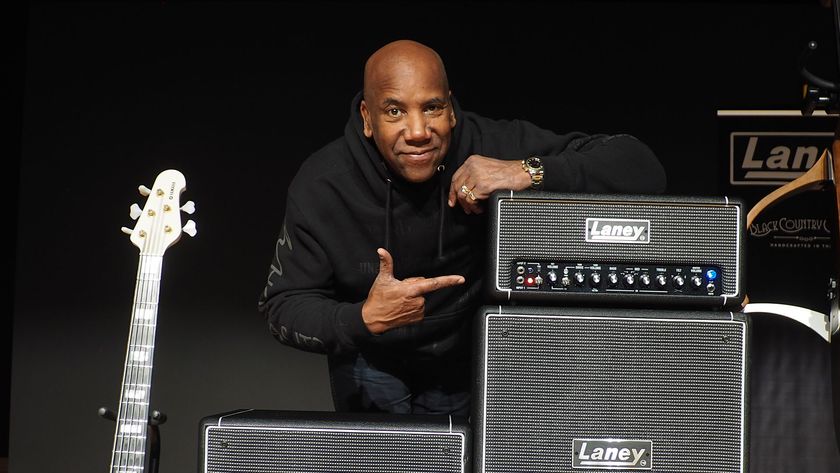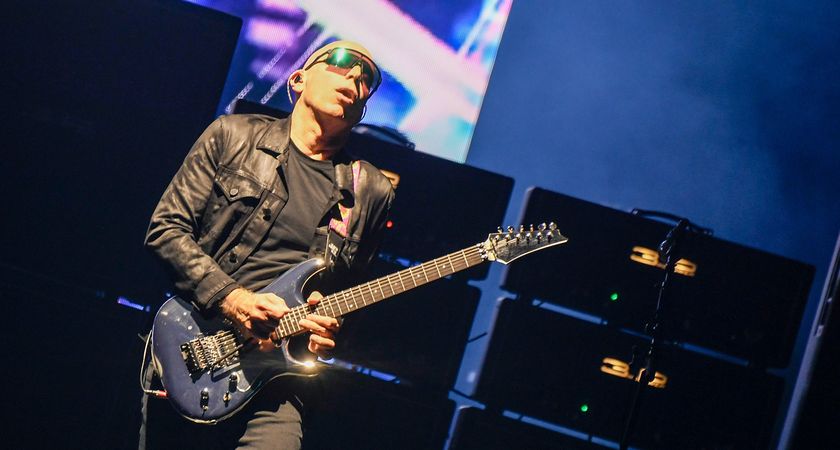“We love the sound of DI guitars. We don’t make our lives easier with technology – it’s a tool to be abused”: Industrial riffers Saint Agnes break all the gear rules and embrace wrong notes in the name of intensity and aggression
Don’t let Kitty A. Austen and Jon James Tufnell’s proclivity for DI guitars and plugins fool you – the Saint Agnes sound is built on unsung fuzz pedals, unfiltered noise and no limits
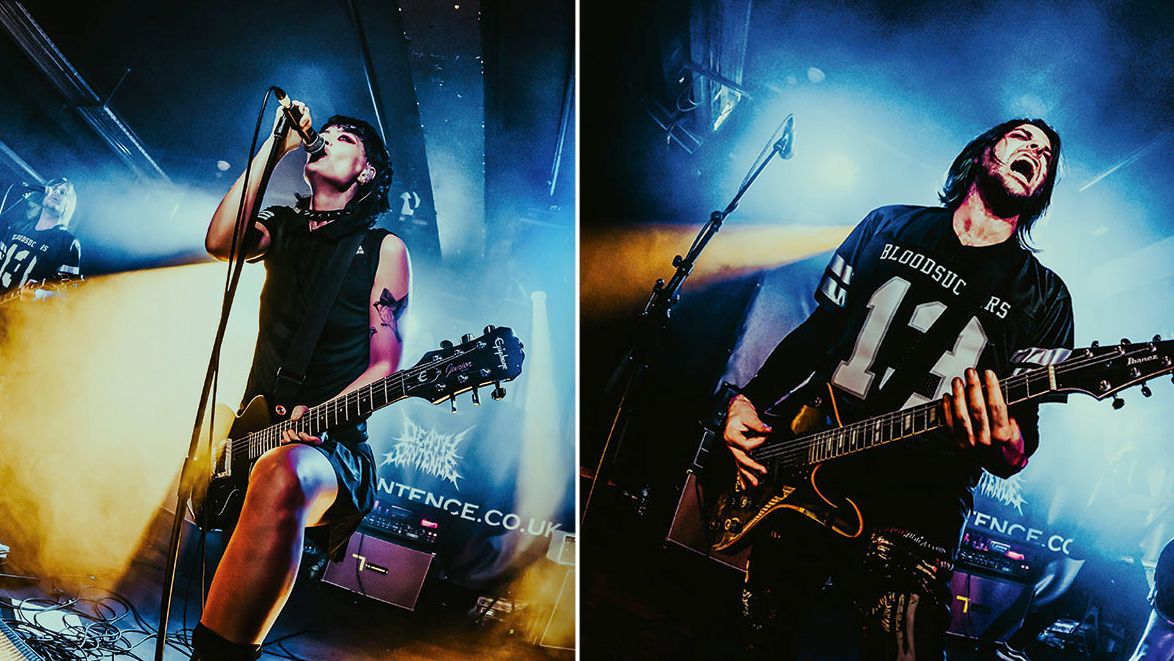
There are some occasions in life when doing the wrong thing can be exactly the right thing to do, and making a rock record is one of them. The art of engineering and producing is something that can be taught in a classroom, but learning when to bend the rules, when to break them, and when to throw orthodoxy on the bonfire comes from instinct. It comes from knowing the material.
The songs that Saint Agnes’ vocalist/guitarist Kitty A. Austen and guitarist Jon James Tufnell had put together for Bloodsuckers, their major label debut for Spinefarm and follow-up to 2019 debut Welcome To Silvertown, told them all they needed to know. This was a record made during difficult times.
Kitty’s mother had died in the months before they went to work. This was never going to be finessed onto the tape, quantised, manicured. It was to be a bonfire of the rulebook, ugly and confrontational, and they knew this from the get-go.
“We’re producing even before the song is written,” Kitty says “I’ll have a concept in mind, a vision of the song, and that will include things like, ‘I want a guitar that sounds like this band, or this bit in a specific song.’ We never, ever sit down with an acoustic guitar and work out chords and melody. It is always the whole thing, complete in my head as we go.”
What Saint Agnes had in mind was raw nerves, feedback, nasty fuzz, chaos. When the pair speak to Total Guitar, Jon doesn’t need to be wearing a Nine Inch Nails t-shirt to reveal the Trent Reznor influence. You could add Rage Against the Machine in there, too, for the off-road guitar sounds and quiet/loud dynamic. Bloodsuckers is every inch the studio record but has a live feel, leaning hard on drummer Andy Head’s ability to come down hard with big, clean hits. “You can really crank the overheads and get the excitement from the snare,” Jon says.
You could also run another track of drums and put it through a Z.Vex Fuzz Factory, as Jon did to add some weird textures to Animal. There are moments when you are not quite sure if Kitty is even going to make it to the next track, that any moment now she’s gonna smash the mic and storm off – she has an affection for the word ‘motherfucker’ to rival Samuel L. Jackson. All of it sounds in the red.
“We are much more interested in the emotion of it instead of making sure it is absolutely on the grid,” Kitty says. “There might be some wrong notes on there and we might well keep them because we love the intensity and the aggression of the performance.”
Get The Pick Newsletter
All the latest guitar news, interviews, lessons, reviews, deals and more, direct to your inbox!
If any more intensity was required, Kitty and Jon would engineer it, twisting electric guitars or vocals into sounds that might otherwise be synthesized. This Is Not The End needed the treatment.
Jon took Kitty’s vocals and tricked the computer into glitching them. If the band were a little spooked going into this record, knowing how important it would be, Sean Beavan’s counsel and production nous put them on ease. Hired for his long association with Trent Reznor and Nine Inch Nails, Beavan worked with Saint Agnes on Follow You, giving them a mix but more importantly the confidence they needed to trust their instincts and take the record wherever they wanted it to go.
That was the first song in the can, and it established the precedent that, sure, Kitty could just track vocals using the same industry-standard Shure SM58 she uses onstage. Why not? Like any good producer worth their salt, when they like what they’re hearing they stay out of the way.
As Kitty recalls it: “He said, ‘I am not in the business of making Sean Beavan records. I want to make the most Nine Inch Nails records that I can make. I want to make the most Saint Agnes record I can make.’ That was music to our ears.”
With Follow You on file they moved straight onto Middle Finger, opening it with a really screwed up piece of noise, played on bass guitar. That was another source of stress; who would play bass? Ben Chernett had left the band right before the sessions began. Kitty and Jon took turns.
On Middle Finger, we are hearing Kitty playing bass while Jon manipulates a DigiTech Whammy. Chernett’s departure was disruptive but it afforded Kitty and Jon a sense of clarity and freedom to cut loose.
“Kitty and I are the creative driving force of the band and it just meant that there was one fewer person to negotiate with, to take into account,” Jon says. “And so this record, being so incredibly personal for Kitty, it was totally unfiltered. Kitty was in a really tough place, and might spend three days just not in a mental state to really work on it. So when she was like, ‘Actually, let’s go play guitar.’ I’d be like, ‘Fuck yeah, let’s go!’”
Ryan Brown has since been hired on bass guitar. Now they’ve just got to work out how to recreate these sounds live. Oftentimes, a band will find a rhythm guitar sound and build an album around it.
In Saint Agnes, the guitar tone evolves across the record. It is to fit the song, they say, and yet, how this record was made, with Kitty and Jon passing each other the guitar, shouting out the plays to one another, and making it up as they went along, it’s as though the rhythm guitar tone was evolving over the course of the record, drawing influence from what had immediately came before.
Jon used a few models: a Silvertone Jupiter with silver-foils, an Epiphone Dot with Bare Knuckle P-90s, and there was an Ibanez Iceman with a DiMarzio Super Distortion at the bridge and an RG370 S-style for divebomb stunt guitar. A laundry list of stompboxes were used.
There were some constants, like Kitty’s 1960s Hofner Galaxie that she used throughout. With its original staple pickups, it is a regular scale guitar that sounds like a baritone. “The chunk on it is unbelievable,” she says. “I love it. I love that guitar. And I have had to stop playing it because it’s getting more and more fucked.”
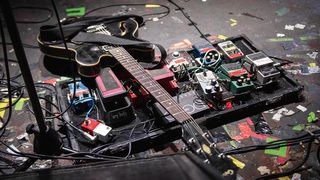
Another signature sound was DI’d guitar through a vintage Zoom UF-01 Ultra Fuzz. We say ‘vintage’, but the Ultra Fuzz dropped in 2001, already looking like it belonged to another era, to another industry. Some players found it difficult, arcane. Jon finds it essential.
We love the sound of DI guitars. I love Nine Inch Nails. I love industrial music. Kitty is the same
Jon James Tufnell
“I have two, and I bought one for £19, like, 15 years ago, and the other one I bought for £140 in case the other one died, but they are fucking solid,” he says. “It’s crazy. With heavy guitar, we pretty much always set up a DI of one of those two pedals, and then we will decide if that’s enough on its own, and if its not we will bring in an amp sound which is normally going to be one of our Laneys, because we’re endorsed by them. We use the Ironheart.”
The STL AmpHub guitar VST plugin suite came in handy, as did Austen’s Peavey Classic 30 1x12 combo amp, which also found its way on record. If the Saint Agnes aesthetic is to favour the face-ripping intensity that comes from the DI-through-fuzz-distortion approach, they know not to push it too far.
“We love the sound of DI guitars,” Jon says. “I love Nine Inch Nails. I love industrial music. Kitty is the same. We love the immediacy and brightness of that, and how close it sounds to your ears. But it’s also incredibly fatiguing to listen to, so we try to use it as often as we can but mixed in with real amp sounds.”
Where Saint Agnes differ from most bands who track their guitars direct to the desk is that they have the sound baked in. Jon will have his through an Ultra Fuzz, Kitty through a Boss Metal Zone. Technology can offer a safety net when recording. Not here. “We don’t make our lives easier with it,” Jon says. “It is a tool to be abused.”
So, too, is the gear. We all get precious about it, but you’ll hear cheapo Behringer distortion pedals on Bloodsuckers. The P-Bass was a Squier. They are all tools to be abused. Everything is. That sound in your head? It doesn’t matter how you get it.
“We see each other’s ability as tools to use,” Jon says. “If there is something that needs more lead playing, that’s always going to be me. If there is something that needs a riff, but it just doesn’t have enough jagged character to it, Kitty will play it.
“The way Kitty plays is just incredibly aggressive, just insanely hard. I can’t replicate the same feel. There is something really grungy and punky about the way Kitty plays, and it just works. We are not precious at all…”
- Bloodsuckers is out now via Spinefarm.
Jonathan Horsley has been writing about guitars since 2005, playing them since 1990, and regularly contributes to publications including Guitar World, MusicRadar and Total Guitar. He uses Jazz III nylon picks, 10s during the week, 9s at the weekend, and shamefully still struggles with rhythm figure one of Van Halen’s Panama.
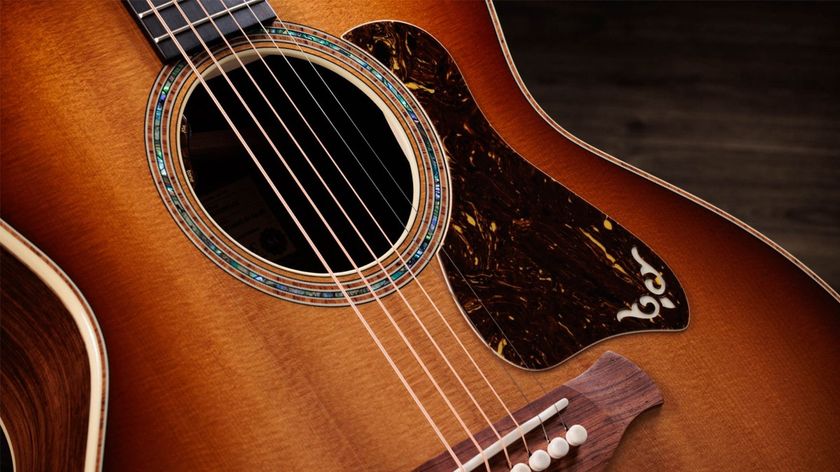
“An investment-grade, pro-quality guitar that will provide decades of playing enjoyment before it becomes a treasured family heirloom”: Taylor Gold Label 814e SB review
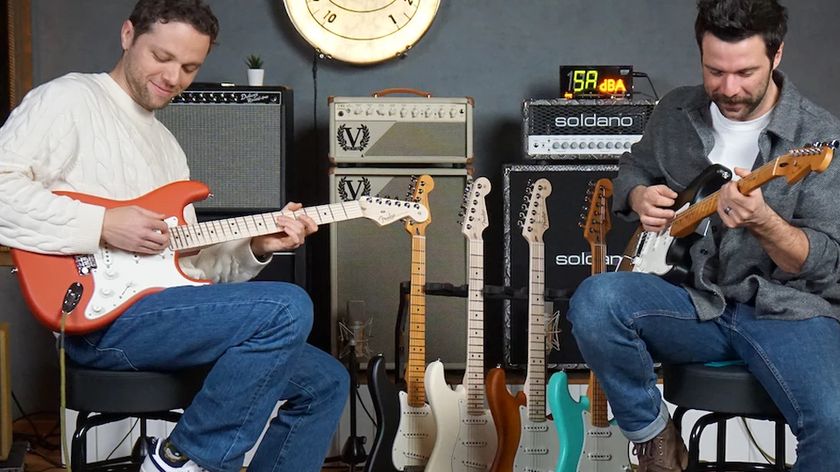
“Satin Stratocaster dreams”: Fender and Thomann have produced two new exclusive Stratocaster lines – and their prices rival existing US and Mexico-made models

